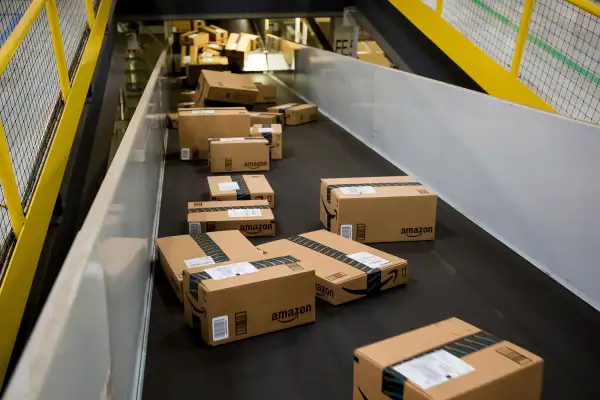Amazon's Big Private Label Push, and Why Name Brands Matter Less Nowadays

The phrase "store brand" probably brings to mind cheap knockoff versions of popular goods. You know, the products that look similar to NyQuil, Oreos, and Corn Flakes or whatever, only they're cheaper, have less familiar packaging, and are generally stocked one shelf above or below the real deal in the store.
This week has begun with some big news for generic "store brands," and the goods in question are not actually being sold in a store, but on a site—specifically, the world's largest site for retail sales, Amazon.com.
As Money reported, Amazon is significantly expanding its usage of private labels. According to the Wall Street Journal, Amazon will soon be promoting and selling brands like Happy Belly (nuts, trail mix, tea), Presto! (household goods), and Mama Bear (baby items). Meanwhile, the company already has been stealthily selling at least seven in-house apparel brands that many customers probably have no idea are clothes made exclusively for the site.
In terms of the bigger picture, consumers are enjoying something of a golden age for private labels—which might also be referred to as store brands, house brands or, more disparagingly, generic or no-name brands. Whatever you call them, such goods have become increasingly commonplace for many reasons, not the least of which is that they're often of decent if not high quality.
Of course, national retail chains have sold private label items for decades. House brands are cheaper to produce, largely because they don't incur the costs of national advertising and marketing campaigns like the famous players do, and so stores can sell them for cheap prices and still yield profits.
Read Next: 12 Things Americans Are Suddenly Buying More Than Ever
In the aftermath of the Great Recession in particular, stores have upped their game for stocking house labels that aren't merely adequate knockoffs but in fact are on par or better than the national brands. Consumer taste tests have periodically shown that some supermarket's house branded foods can taste better than their better-known counterparts. So there's often no reason to pay a premium for the national brand.
No wonder, then, that supermarkets like Kroger and Safeway have been significantly expanding their store-brand goods in recent years. House brands also play a huge role in the recent success of Trader Joe's and Aldi, as the vast majority of items sold by the two small-format grocery brands (both owned by the same German company, by the way) are private labels. Pharmacies are in the game as well, and not just for drugstore staples like cough medicine and first-aid supplies: CVS, for instance, has been expanding and improving its food store brand, Gold Emblem.
The cheaper prices of private label goods will always attract a small subset of bargain hunters. To experience broad appeal, though, it's essential for such goods to stand out as excellent values rather than simply cheap substitutes. Shoppers will let retailers know when the house brands aren't up to snuff. Walmart recently pulled the plug on Price First, an ultra-basic, ultra-cheap food label that apparently didn't cut it with consumers. Amazon temporarily discontinued its line of Element diapers shortly after launch as well, reportedly because of quality issues.
On the other hand, some "no-name" labels have transcended the category and become favored over national brands, regardless of price. Shoppers regularly name Trader Joe's as America's favorite supermarket because they love its selection of high-quality house brands, which just so happened to be priced very competitively. The equation is slightly different for today's fast fashion retailers and their house labels: Because today's shoppers primarily want apparel that's fresh, new, and cheap, the bar is set fairly low in terms of clothing quality. Few H&M customers expect to be wearing their $5 T-shirts and $15 jeans for years, after all.
Read Next: Why Walmart Just Decided to Get Rid of Two Huge Food Brands
In any event, a successful house label strategy is truly a win-win for the retailer. It allows the store to bring in higher profits via goods that not only cost less to make and market, but also are so in-demand that shoppers actively seek the store out. This is the goal whether we're talking about Trader Joe's brand mac and cheese, Target's Archer Farms label, or any of Amazon's rapidly expanding roster of exclusive foods, electronics, and household goods.
What's more, what any store really hopes for is to establish a long history of successfully selling lots and lots of decent-quality items under a range of house labels. Once this is accomplished, customers will feel good about buying almost anything the store sells, regardless of the familiarity (or unfamiliarity) of the brand.
